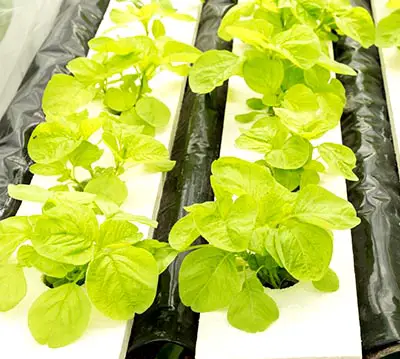Contents
Hydroponics and aeroponics are two newly introduced cultivation systems gaining popularity all over the world. Comparing the two methods is your best bet if you’re looking for a way to move beyond traditional soil gardening.
Aeroponics and hydroponics, two methods of growing crops without soil, are based on the notion that soil is just a means for nutrient delivery to the plants and not an essential element. However, if you aren’t sure how they work or which one has an advantage over the other, they can get complicated in practice.
Aeroponics
Growing plants aeroponically instead of in soil is the basis of aeroponics. To hold the plants in place, growers use foam sheets, boards or plastic clips. Using this system, an aeroponic plant grows in an enclosed environment suspended in the air, receiving nutrients via spraying the plant roots with essential nutrients. A pump generates a nutrient-rich mist by spraying the nutrient-rich solution and applying pressure. The enclosed environment ensures that the nutrient mist stays for a longer duration, resulting in the rapid growth of the plants since no wind exists during the entire process. Root rot can also be avoidable in aeroponic gardening.
Hydroponics

Like aeroponic growth, hydroponic gardening uses water to dissolve nutrients that plants receive directly through their roots. These plants are either grown in a grow tray or are given the rich solution from a nutrient reservoir. Water evaporation causes the chemicals in the nutrient-laden water solution to become more concentrated, making it necessary to test the water regularly to ensure pH and nutrient levels aren’t too high. Hydroponics is derived from the Greek words hydro, meaning water, and ponos, meaning labor. In a nutshell, hydroponics is the cultivation of crops in soilless conditions.
Hydroponics systems can be classified into two types:
- Solution-culture hydroponics, in which a nutrient-rich water solution is the only growth medium used to stimulate the growth of plants.
- Hydroponic medium-culture expanded clay pellets, clay pebbles, gravel, or rock wool provide a substrate for the plants.
There are several types of hydroponics systems based on grower requirements and environmental conditions.
Aeroponics Vs. Hydroponics
Hydroponics and aeroponics differ from geoponics, which involves the cultivation of plants in soil because plants absorb nutrients through their roots after they dissolve in water. Both aeroponics and hydroponic setups use water as the medium, so sometimes they are considered subsets of each other. On closer inspection, however, you can see that they are entirely different. As you decide between the two methods, you must take into account both their advantages and disadvantages.
Plant Growth
The aeroponic system has the edge over hydroponic systems when comparing plant growth and crop yield. Submerged roots in a water supply are not subjected to proper aeration in a hydroponic garden. The roots of plants in aeroponics are suspended in air, which means they can absorb oxygen more readily. As far as experts are concerned, healthy growth and consequent better produce are attributed to aeration in an aeroponic garden. In their adult stages, aeroponic plants are generally bigger than hydroponic plants.
Plant Health
Again, aeroponics has an advantage over hydroponics when it comes to diseases of the plants, mainly due to two factors. The entire aeroponic system is carried out in an enclosed environment, which minimizes the chances of foreign particles coming in contact with numerous plants. Additionally, every time the individual plants are sprayed with a nutrient mixture, a new one is sprayed. Because the humidity levels in the surrounding area are quite high in hydroponic systems, bacteria can grow quite rapidly.
Although hydroponics can sometimes starve roots of oxygen, aeroponics does not suffer from this problem, even with an air stone and an air pump. Hydroponics can cause algae growth and fungal problems due to standing water, depleted oxygen, pH levels, and nutrient salts.
Impact on the Environment
The advantages of both methods over geoponics are that they don’t require chemical additives. Experts say that aeroponics may be better than hydroponics since it requires less water usage and nutrients.
Initial Investment
Both cultivation techniques require a substantial initial investment in terms of setup costs. Aeroponics differs from hydroponics in that there is no medium. Whereas, in hydroponics, nutrient-rich water is used. Aeroponics is therefore completely reliant on machinery. Plants suffer if the machinery breaks down. Unless the plants have these liquid nutrients, they won’t last very long. Aeroponics must therefore have a provisional backup system, which adds to an initial investment, giving hydroponics an edge. Both, however, get expensive when it comes to the cost of lighting.
As far as the initial investment is concerned, aeroponics is more expensive than hydroponics. This may seem like an example of spending more on more convenient facilities (which is justified). Regardless of which is better, the introduction of these cultivation systems has come as a blessing in disguise since soil degradation has become a major issue in recent years.

